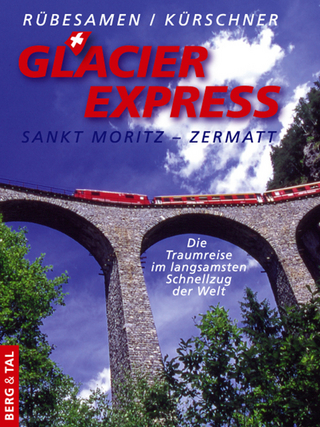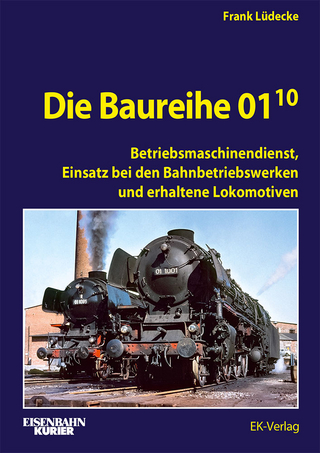
King's Cross Second Man
A Sixties Diesel Career
Seiten
2019
Pen & Sword Transport (Verlag)
978-1-4738-7823-5 (ISBN)
Pen & Sword Transport (Verlag)
978-1-4738-7823-5 (ISBN)
This book uses Norman Hill's records of 1964-68 as a basis for an account in which he will show the slow and difficult transition of Britains railway from its traditional steam-powered world into the modern world of diesel and electric traction.
Late in 1964 the author made a career change from the Midland Region railway clerical grades, to the Eastern Region Motive Power Department at King's Cross, initially as a locomotive cleaner. This was the realisation of an ambition held for some ten years and by the end of December 1964, he became eligible for second man duties. On 28 December 1964, he was second man on a return trip to Peterborough, and determined to keep a record of the run; locomotive employed, the driver he accompanied, the rostered diagram and the actual circumstances of the diagram. Norman duly recorded this shift, along with all shifts worked during his employment as second man.
Norman realised that such a record would be of great interest to both railway enthusiasts and employees, past and present. Especially those who worked on the southern section of the East Coast Main Line or those with a special interest in the railways of the 1960s a formative period of railway modernisation when 150 years of steam-powered railway locomotion gave way to more modern means of motive power. This book will use Norman's records of 1964-68 as a basis for an account in which he will show the slow and difficult transition of Britains railway from its traditional steam-powered world into the modern world of diesel and electric traction.
Norman's work as second man took him to places and railway installations in North London that no longer exist, and which have taken their place in railway history, and sometimes even within the broader fabric of the history of London, and of England itself. Through the medium of Norman's records of 1960's railway working, he looks back and rediscovers these forgotten places and so contrasts nineteenth-century railways and industrial history with operating practices on todays modern British railways.
Late in 1964 the author made a career change from the Midland Region railway clerical grades, to the Eastern Region Motive Power Department at King's Cross, initially as a locomotive cleaner. This was the realisation of an ambition held for some ten years and by the end of December 1964, he became eligible for second man duties. On 28 December 1964, he was second man on a return trip to Peterborough, and determined to keep a record of the run; locomotive employed, the driver he accompanied, the rostered diagram and the actual circumstances of the diagram. Norman duly recorded this shift, along with all shifts worked during his employment as second man.
Norman realised that such a record would be of great interest to both railway enthusiasts and employees, past and present. Especially those who worked on the southern section of the East Coast Main Line or those with a special interest in the railways of the 1960s a formative period of railway modernisation when 150 years of steam-powered railway locomotion gave way to more modern means of motive power. This book will use Norman's records of 1964-68 as a basis for an account in which he will show the slow and difficult transition of Britains railway from its traditional steam-powered world into the modern world of diesel and electric traction.
Norman's work as second man took him to places and railway installations in North London that no longer exist, and which have taken their place in railway history, and sometimes even within the broader fabric of the history of London, and of England itself. Through the medium of Norman's records of 1960's railway working, he looks back and rediscovers these forgotten places and so contrasts nineteenth-century railways and industrial history with operating practices on todays modern British railways.
Norman Hill was born in Potters Bar, Herefordshire, in 1939/. He has had a lifelong interest and railways and since leaving school in 1956, he spent some nine years in BR booking offices on both Eastern and Midlands regions. In 1963, he moved to the Midland region Audit HQ in Melton House, Watford, and in 1964 he went to King's Cross as a 'second man' on diesel locomotives. Norman returned to full-time education in 1973 and completed a BA (hons) degree in 1978/. He finally returned to the GNER and retired from King's Cross Travel Centre in 1999/. He has published one previous book entitled Teesside Railways A View from the Past.
| Erscheinungsdatum | 19.02.2019 |
|---|---|
| Zusatzinfo | 150 colour & black and white photographs and an Eastern Region map |
| Verlagsort | Barnsley |
| Sprache | englisch |
| Maße | 216 x 282 mm |
| Themenwelt | Natur / Technik ► Fahrzeuge / Flugzeuge / Schiffe ► Schienenfahrzeuge |
| ISBN-10 | 1-4738-7823-3 / 1473878233 |
| ISBN-13 | 978-1-4738-7823-5 / 9781473878235 |
| Zustand | Neuware |
| Haben Sie eine Frage zum Produkt? |
Mehr entdecken
aus dem Bereich
aus dem Bereich
die Rhätische Bahn schreibt Geschichte
Buch | Hardcover (2023)
Edition Somedia (Verlag)
59,00 €
St. Moritz – Zermatt : die Traumreise im langsamsten Schnellzug der …
Buch | Hardcover (2023)
Verlag Berg & Tal
14,95 €
Betriebsmaschinendienst, Einsatz bei den Bahnbetriebswerken und …
Buch | Hardcover (2024)
EK-Verlag
54,00 €


